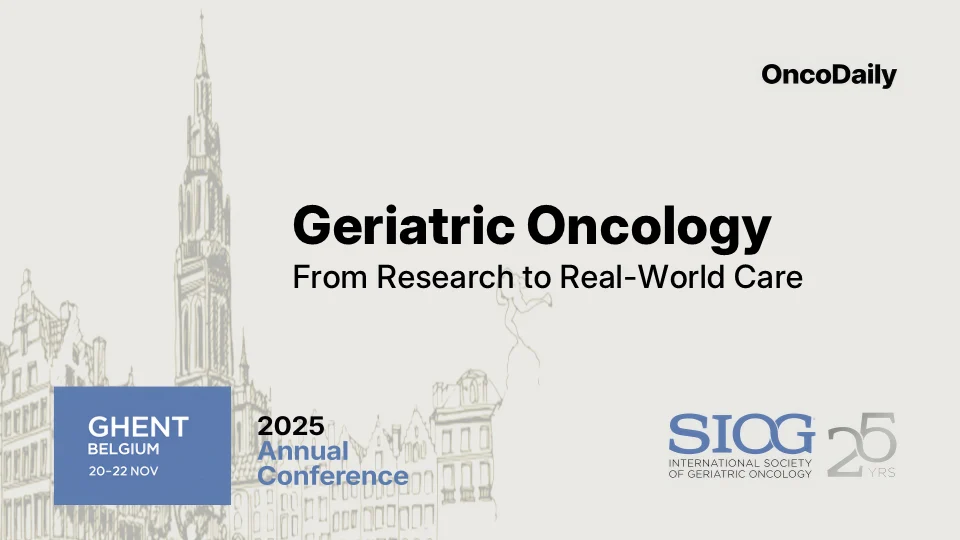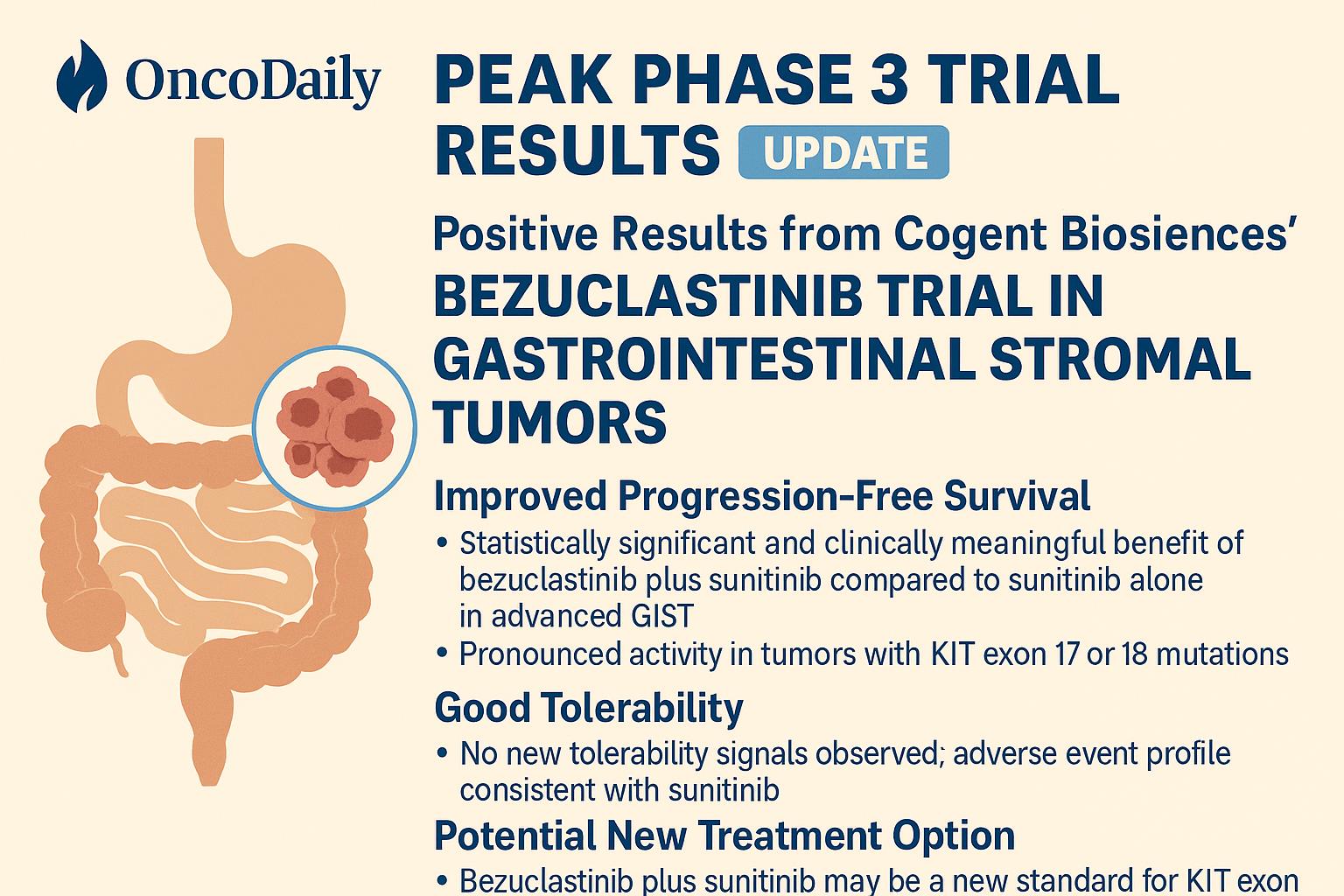Plenary Session “Geriatric oncology: from research to clinical practice” at SIOG 2025 showcased something very tangible: geriatric oncology is no longer a niche concept or a research slogan. Across the world, cancer centers are building structured models of care for older adults, adapting treatment decisions, and reshaping how multidisciplinary teams work.
Chaired by Lore Decoster (Brussels), Cindy Kenis (Leuven) and Hans Wildiers (Leuven), the session moved from individual institutional models to a global overview, with a clear theme: the evidence exists — now the challenge is scaling and embedding it in everyday oncology practice.
Setting the Stage: Research Only Matters if It Reaches the Clinic
Opening the session, Lore Decoster emphasized the core mission of geriatric oncology today: not only generating data, but making sure it changes how older adults with cancer are actually treated. Evidence on geriatric assessment, toxicity prediction, and patient-centered decision-making is strong; the bottleneck is implementation — workforce, pathways, culture, and funding.
The subsequent talks then demonstrated, in very practical terms, how different centers are trying to solve that problem.
Building a Geriatric Oncology Pathway at The Royal Marsden
From Toronto, Susie Monginot highlighted the 10-year journey of the Older Adults with Cancer Clinic at Princess Margaret Cancer Centre. Nearly half of new patients are 65+, many frail, driving the clinic’s expansion from a small 2015 pilot to four half-day clinics supported by geriatricians, fellows, social work, and dietetics.
The team delivers full Comprehensive Geriatric Assessments and actively implements recommendations — from medication adjustments to allied-health referrals. Despite challenges with space, funding, and wait times, the model shows clear demand and meaningful impact on treatment planning.
Embedding Patient Goals and Nurse Input into Tumor Boards
Hanneke van der Wal-Huisman (Groningen, Netherlands) described the Integrated Oncological Decision-Making model, created to bring patient goals and nurse insights directly into MDT discussions.
Her team found that functional status, psychosocial factors, and what truly matters to patients were often missing from decision-making, even though nurses knew this information well. In the new model, nurses conduct a structured assessment focused on goals, priorities, and daily functioning, and this input is formally included in the MDT.
The approach leads to more individualized care and stronger communication. Patients feel heard, and clinicians feel decisions better reflect the whole person. The team emphasized the importance of collaboration, leadership support, clear documentation, and a culture open to reflection and challenge.
A Continuum-of-Care Model in a Geriatric Hospital
From Chennai, Rejiv Rajendranath presented a very different, but equally comprehensive, model: a geriatric cancer care program embedded within a dedicated geriatric hospital.
This center combines acute geriatric beds, long-term and transitional care, home visits (over 330,000 home visits in three years), assisted living facilities, and community clinics. Cancer care for older adults is integrated into this ecosystem rather than carved out as a separate silo.
In a context where most older adults are self-paying and insurance coverage is limited after age 60–65, the model is built around continuity and proximity:
- geriatricians see almost every patient
- CGA and tools such as G8 and Indian-specific instruments are used selectively but systematically
- oncologists, geriatricians, palliative care, psycho-oncology, and rehab work as one team
- home care and assisted living reduce hospital stays, travel burden, and caregiver strain
Cultural factors, such as family-centered decision-making and reluctance to discuss prognosis directly with the patient, are addressed through multi-session counseling and gradual, sensitive communication. Treatment is often tailored through escalation/de-escalation decisions grounded in both biology and patient/family preferences.
The model is still evolving, but it illustrates how geriatric oncology principles can be adapted to middle-income settings, self-pay realities, and strong family involvement — without losing the core of individualized, goal-concordant care.
Building a Senior Adult Oncology Programme
Nicolò Matteo Luca Battisti presented the Senior Adult Oncology Programme at The Royal Marsden (UK), developed over four years in a hospital without geriatricians. With initial cancer-alliance funding, the team built a multidisciplinary service — nursing, rehab, pharmacy, dietetics, psychology, and admin support — and anchored it in a screening-based pathway using tools like the G8/SIOG 2 and structured goal-setting questions.
The programme was deliberately aligned with hospital priorities such as reducing unplanned admissions and improving efficiency, helping demonstrate its value and secure long-term institutional funding. It has since expanded across more disease sites.
Education is central, with international fellows rotating through the service, geriatric oncology concepts integrated into training, and a new research fellowship supporting ongoing development.
Scaling Through “Practical GA” and Smart Nudges
Ramy Sedhom (Philadelphia/Princeton) presented a highly implementation-focused approach: embedded “practical geriatric assessment” and multidisciplinary pathways designed to be scalable across a large system.
Recognizing that full CGA for every older patient is unrealistic, his team leveraged behavioral economics and EHR design:
- A concise geriatric assessment is built into Epic and automatically pushed to patients ≥70 as a pre-visit survey.
- Results appear in a structured flowsheet, making it easy for oncologists to see impairments at a glance.
- Pop-up prompts “nudge” clinicians toward appropriate referrals based on detected deficits (falls, nutrition, mood, social issues, etc.).
A geriatric nurse navigator and a weekly multidisciplinary conference (oncologists, APPs, psychosocial oncology, palliative care, navigation) ensure that high-risk cases are proactively addressed. Structured emails summarize recommendations and close the loop with treating teams.
In two years, over 200+ practical GAs have been completed, each generating multiple referrals on average. Most older adults had unrecognized functional or psychosocial vulnerabilities; most prioritized quality of life rather than pure survival. Early analyses suggest better end-of-life care and, for those under enhanced navigation, longer hospice stays and smoother transitions.
Global Models: Different Pathways, Same Principles
Finally, Colm Mac Eochagain (Dublin) presented a global overview of 38 geriatric oncology services worldwide, synthesizing their structures into broad model types:
- Consultative clinics (one-off GA and recommendations)
- Co-management models (shared responsibility across the cancer trajectory)
- Screen-and-refer models (systematic screening to triage who needs GA)
- Comprehensive units (fully integrated geriatric-oncology-supportive care continuum)
- emerging hybrid/digital models that use telehealth, patient portals, and regional networks
Despite local differences in staffing, funding, and health systems, some constants emerged: routine use of geriatric assessment (full or pragmatic), multidisciplinary decision-making, and at least some structured way to identify older adults at risk.
Take-Home Message from this session
The science of geriatric oncology is mature enough .The pressing task now is implementation — building models that fit local realities, securing funding, embedding assessment tools in workflows, and making sure that every older adult with cancer receives care that reflects both their biology and their goals.
for more information click here.









